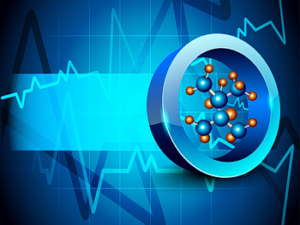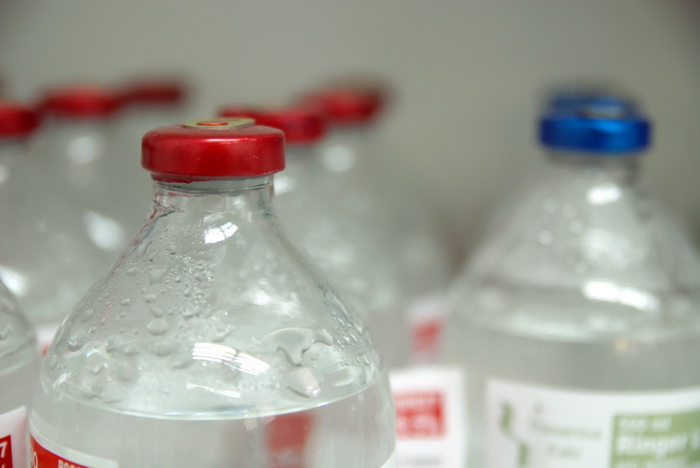“meduza” by Natasha Dzhola is licensed under CC BY-NC-ND 4.0
by Natasha Dzhola is licensed under CC BY-NC-ND 4.0
Ever wonder why some people have disabilities? Might be from an accident or they could have been that way since birth, but if they were born that way, the question would be why did this happen?
People from around the world fall victim to different birth defects, also known as genetic disorders. Some of the more common diseases are: Down Syndrome, Cystic Fibrosis, and Sickle Cell Anemia.
But what is a genetic diesorder exactly and what can be done about it? Let’s dwelve into this more closely.
What Is a Genetic Disorder?

A Genetic disorder is a condition caused by a mutation in the DNA or the abnormality in a person’s genome or genetic makeup.
There are about 6000 genetic disorders, which can be categorized by the following four types:
- Single-gene mutation
- Multiple genes mutations
- Chromosomal abnormalities
- mitochondrial mutations
Single Gene Mutation
Single-gene mutation, (AKA Mendelian disorder, or monogenic inheritance) is the type of abnormality which occurs in a single gene’s DNA sequence. There are thousands of known single-gene disorders, but these diseases are not too common. Four examples follow.
- A condition caused by acquiring a single defective gene from any one of the parents called Autosomal Dominant Inheritance.
- A condition caused by acquiring one defective gene from each parent, forming a pair, called Autosomal Recessive Inheritance.
- A condition caused by acquiring the defective gene from the female or x-chromosome, called X-Linked Inheritance. It is further divided into dominant or recessive.
Some common examples of a single-gene mutation are cystic fibrosis, sickle cell anemia, fragile X syndrome, Huntington’s disease, hemochromatosis, and Marfan syndrome.
Multiple Genes Mutation
The second category consists of genetic disorders caused by multiple genes mutations, (AKA polygenic inheritance, or multifactorial inheritance). This mutation occurs when more than one gene is altered and environmental factors also play a role. Some chronic diseases like heart conditions, high blood pressure, diabetes, obesity, arthritis, and Alzheimer’s disease are multifactorial disorders. Fatal diseases, like Breast cancer, are found to have genetic symptoms when mutations exists on the chromosomes. Each human has 23 pairs of chromosomes and they are numbered. In this case, if chromosomes 6, 11, 13, 14, 15, 17, and 22 are defective, the diseases mentioned above can occur.
Normally, a child often inherits characteristics and traits like hair, eye, skin color, height, and facial features due to multiple gene inheritance.
Chromosomal abnormalities
Chromosomes contain genetic information and any abnormality in its structure can cause genetic disorders as mentioned. These abnormalities occur during the process of cell division.
Mitochondrial Mutations
Each cell contains small round, rod-like structures called organelles. Some organelles are the nucleus, nucleolus, endoplasmic reticulum, Golgi apparatus, mitochondria, ribosomes, lysosomes, endosomes, and peroxisomes. Confused? Don’t worry. Just know that there are different parts of a cell called organelles.
The diseases caused by a mutation such as a defection in the mitochondria would include Leber’s hereditary optic atrophy (LHON), myoclonic epilepsy with ragged red fibers (MERRF), mitochondrial encephalopathy, lactic acidosis, and stroke-like episodes (MELAS).
Some Common Genetic Disorders
DOWN SYNDROME
Normally, there are 23 pairs of chromosomes present in the nucleus of a cell. A person suffers from Down syndrome when out of these 23 pairs, a part or the entirety of the 21st chromosome gets copied an extra time. Prenatal screening tests, like blood tests, are carried out during pregnancy to study the chromosomal material present in the mother’s blood. This is an effective method of finding out whether or not the newborn will have Down syndrome.
This disorder causes physical and cognitive growth delays, mild to moderate intellectual disability, and special facial features. Small body frame, upward tilted eyes, and a low muscle tone are also some signs of Down syndrome. The Centers for Disease Control and Prevention (CDC) has announced that out of every 700 babies born in the U.S. at least one will suffer from this disorder. This disease also depends on the age of the mother: the greater the age, the higher the chances of this disorder.
THALASSEMIA
It is a genetically inherited blood disorder in which the quantity of red blood cells in a person’s body is lower than normal and the body naturally produces a lesser amount of hemoglobin. This disease is caused by mutations in the DNA of cells that make hemoglobin. This disease hinders the flow of oxygen within the body. If both the parents contribute with a Thalassemia gene, there will be a 25% probability of the newborn acquiring this disease. The severe anemia necessitates regular blood transfusions and chelation therapy.
The symptoms of the disease may include slow growth, weakness, pale or yellowish skin, facial bone deformities, fatigue, dark urine, and abdominal swelling.
CYSTIC FIBROSIS
This genetic disorder adversely affects the lungs, digestive tract and other vital organs of the body. Screening for cystic fibrosis is carried out in newborns and is diagnosed in the first month. The disorder targets the cells that are responsible for the production of mucus, digestive juices, and sweat. These secretions are generally slippery and thin, but the defective gene causing cystic fibrosis turns them thick and sticky. The lubricating juices start clogging the passageways, thus causing severe difficulties in the lungs and pancreas.
TAY-SACHS DISEASE
The genetic defects that cause Tay-Sachs disease are similar to that causing Down syndrome. In this disease, the 15th chromosome is repeated, making this disease fatal for children diagnosed with it.
Tay-Sachs is a rare genetic disorder which destroys the neurons in the brain and spinal cord. The newborn suffering from this disease will show no sign of abnormality during the initial three to six months. However, soon the infant starts losing his/her motor skills. The disease worsens with time and the patient suffers from seizures, vision and hearing loss, intellectual disability, and paralysis. Another characteristic sign of this disease is the cherry-red spot in the eye. This condition is fatal and most patients do not survive past their early childhood.






